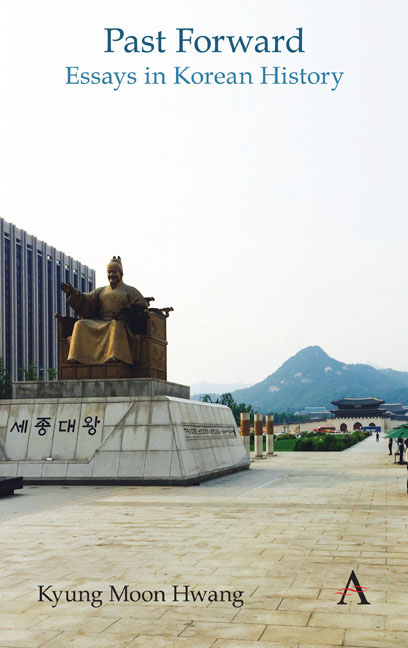Book contents
- Frontmatter
- Contents
- List of Figures
- Foreword
- Chronologies of Korean History
- Themes
- Acknowledgments
- Note on Romanization and Spelling
- Part I Circulating History
- 1 Recycling Names for Korea
- 2 Toppling Tyrants
- 3 Religion and Secularism
- 4 Commemorating the Comfort Women
- 5 May 16 and May 18
- 6 Tragedy and Farce
- 7 Generational Renewal
- Part II Durable Traditions
- Part III Ancient Remains
- Part IV Dynastic Depths
- Part V Modern Origins
- Part VI Challenges of Nationhood
- Part VII History Makers
- Part VIII External Presences
- Part IX Trials of Modernization
- Part X Gripped by the Past
- Index
4 - Commemorating the Comfort Women
from Part I - Circulating History
- Frontmatter
- Contents
- List of Figures
- Foreword
- Chronologies of Korean History
- Themes
- Acknowledgments
- Note on Romanization and Spelling
- Part I Circulating History
- 1 Recycling Names for Korea
- 2 Toppling Tyrants
- 3 Religion and Secularism
- 4 Commemorating the Comfort Women
- 5 May 16 and May 18
- 6 Tragedy and Farce
- 7 Generational Renewal
- Part II Durable Traditions
- Part III Ancient Remains
- Part IV Dynastic Depths
- Part V Modern Origins
- Part VI Challenges of Nationhood
- Part VII History Makers
- Part VIII External Presences
- Part IX Trials of Modernization
- Part X Gripped by the Past
- Index
Summary
The comfort women issue continues to arouse nationalist passions in both South Korea and Japan, as memorial statues are now appearing far beyond the Far East. In South Korea, however, it would be beneficial also to consider the country's own shameful history of sexual exploitation and state-sponsored prostitution.
“Comfort women” or “Comfort Corps” was the euphemism, near the end of Japanese colonial rule, for the military prostitution system servicing the Japanese imperial army in World War II, an offshoot of the “Sacrifice Corps” (“Jeongsindae” in Korean) that produced goods and services for the battle fronts. Various studies over the years have painted a fairly solid picture of how this system worked: The Japanese military helped mobilize and provided the clientele for numerous “comfort stations,” run mostly by nonmilitary entrepreneurs (pimps and human traffickers, more or less), that followed the soldiers as they rampaged through Asia.
The question that will never get fully resolved, but which lies at the heart of the continuing controversy, is the extent to which the Japanese wartime government was involved in luring, coercing and brutalizing these girls. This was not a uniform system, and there was a variety of channels that brought the girls to the comfort stations, although most of the victims appear to have been deceived into circumstances that trapped them in the unrelenting horrors of serial sexual servitude. In the end, of course, it does not really matter whether Japanese officials actually managed this system directly, since the Japanese military created and oversaw the demand from its wars of aggression in the first place. The Japanese government, in sum, was responsible for this deplorable reality, and hence this government today should acknowledge and rectify it.
Beyond this general understanding, we would do well to dig deeper into the historical background of the comfort women system and to examine its aftermath. By doing so, we find that the story is more complicated than what is suggested by placing statues in front of Japanese diplomatic compounds or in public parks.
First, as twisted and repulsive as it might seem, the Japanese imperial army's primary interest in cultivating the comfort women system was a military one, that is, to maintain its fighting prowess through a hygienic and “safe” sexual outlet for its soldiers.
- Type
- Chapter
- Information
- Past ForwardEssays in Korean History, pp. 11 - 13Publisher: Anthem PressPrint publication year: 2019



